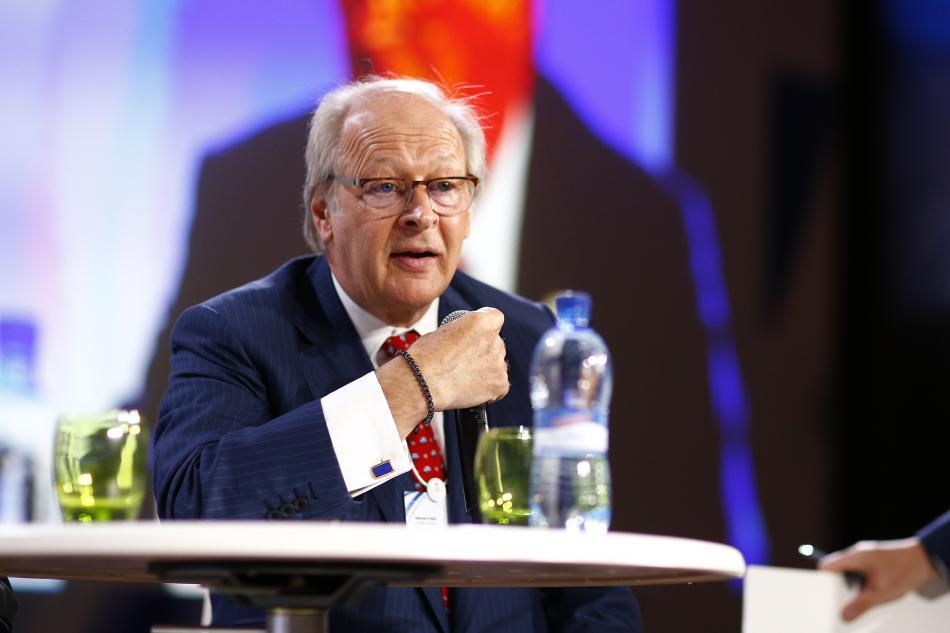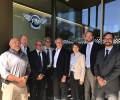Constructing the pyramid
The week’s first interactive session focused on methods of building the careers of drivers from entry level to the very top of the motor sport ladder.

PLEASE CLICK HERE TO FIND THE ALBUM OF THE FIRST DAY OF THE 2016 FIA SPORT CONFERENCE.
The first interactive session of the 2017 FIA Sport Conference brought delegates together with the directors of the FIA Sporting Departments. Heads of the CIK-FIA, Circuit, Historic, Hill-Climb, Off-Road and Rally disciplines presented innovative ways in which ASNs can create a clear and coherent pathway from grassroots level to the top of the various pyramids.
The presentation on the Cross Car concept announced at Monday’s meeting of the World Motor Sport Council perhaps drew greatest interest. An off-road discipline developed to allow ASNs to foster grassroots motor sport, Cross Car has been initiated by the ASN Task Force and the Development Department. ASN Task Force President Andrew Papadopoulos and FIA Deputy President for Sport Graham Stoker were on-stage to discuss the Cross Car initiative.
Commenting on the concept, Stoker said: “It is my intention not only to have Cross Car available through the Sport Grant Programme, but as soon as we’ve driven the price down, we can offer that free of charge as a pilot scheme to certain key areas around the world. Right at the bottom of the pyramid we have karting slalom and we will have Cross Cars. That’s where it all starts.”
Elsewhere, the essential role of track design in constructing new kart circuits was explained by CIK-FIA Executive Secretary Kay Oberheide. With karting forming the first level of training of almost every driver – both on the track and the road – education is a hugely important aspect, and Oberheide said, “Motor sport should be a basis for education as well as for safety in daily traffic, the handling of cars and for behaviour in competition as well.”
FIA Circuit Championships Director Frédéric Bertrand, addressed a wide variety of disciplines, from singleseaters to drag racing and drifting. However, despite the differences between these disciplines, many of the key issues involved are the same. “We have to work to develop drivers, and ensure that they adapt to their environment as they progress through the disciplines of circuit racing.”
Moving on from the area of circuit racing, Jarmo Mahonen, FIA Rally Director, encouraged ASNs to focus on three ‘pillars’ of strategy: product, talents and markets.
Mahonen also drew attention to the fact that the discipline has a unique opportunity to appeal to people who are interested in other adventure type sports such as mountain biking and skiing, but who may not have previously considered competing in motor sport. “Creating a talent pathway is an integral part of offering and benefits for new events, and this requires the support of manufacturers, event organisers and the wider territories,” he said.
The final two presentations were given by Vincent Caro, head of the Hill Climb, Historic and Off-Road departments. “Hill climb is a discipline that fosters the development of motor sport at the grassroots, regional and national levels,” he said. With hill climb being a discipline that involves very short runs, and also contains FIA regulations which restrict development of cars, it is ideal for keeping costs down. Historics, meanwhile, feature specifications that “are set in stone in FIA Appendix K. Therefore, buying a historic racing car is a long-term investment: the car must be as it was in period; it does not risk becoming obsolete after one season and there is no need to upgrade it every year,” Caro added.
Commenting on the session as a whole ASN Task Force President Andrew Papadopoulos said: “What we have discussed today in this session should provide aspirational goals to reach the level of being able to run national championships such as F4 and other series of that level. There is so much we can do with grassroots motor sport, the price is important of course, but it’s only through developing these areas that the higher levels can be achieved sustainably.”

 Facebook
Facebook Twitter
Twitter






